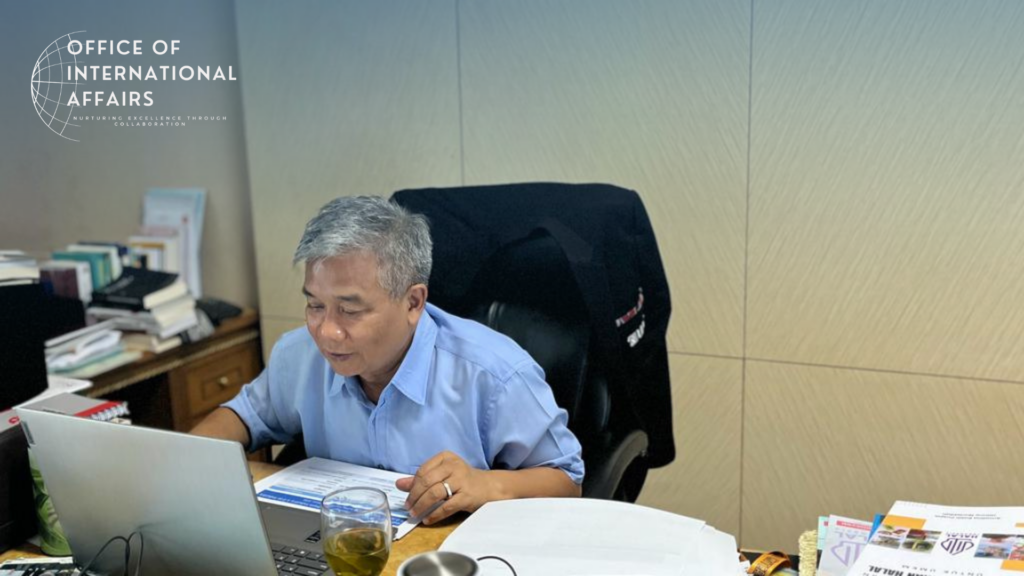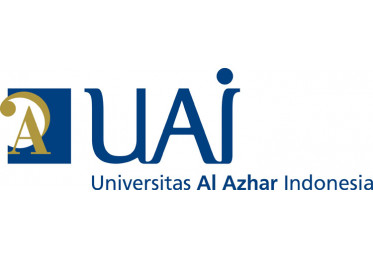Wednesday (23/5) Prof. Dr. Ir. Asep Saefuddin as The Rector of University Al-Azhar Indonesia (UAI) was invited by Tatung University (TTU) to fill in an executive lecture for graduate students of Department of Informatics Management at TTU as well as undergraduate students of the communication department of UAI. At this chance, Prof. Asep brings the theme of Statistics and Society 5.0. The lecture itself was held on a hybrid basis by involving more than 150 students between the two institutions. The topics involve five crucial points which are Statistics; A Glance, Statistics Role in Industry, Statistics & Industrial Revolution, Statistics Industry 5.0 & Society 5.0, and A stick in the darkness.
In the first highlight, Prof. Asep introduced statistics as the appropriate method of history and geography in the science of society in the 17th and 18th Century in France. Statistics provides the answer, the same guarantee of precision, rationality, and impartiality that are attributed to science. Furthermore, he also explained that statistics also play the role of the outset which formed an integral part of the science of society in everyday usage. A scientific tool of observation and classification of the 18th century, it has almost a structural penchant for environmental explanations. Moreover, anthropology had turned into sociology, with statistics retaining its essential role as the appropriate tool for collection and analysis of social data. Hence, he emphasized that statistics as a stick in the darkness as the analogy of “an elephant and blind-men” by Nasoetion, 1974.

“In statistics, when you have the formula, the accuracy of everything will be clear. 1 million without statistics is false. Meanwhile, 1 thousand with statistics is true”. (Prof. Asep)
Equally important, Prof. Asep elaborated about the importance of tracing the significant role of statistics. At the first, he stated that error as the principle of normality law as the random effect independent of systematic factors invented by Gauss as the random model (Generalized Linear Model/GLM). This leads to the systematic and random effects (especially additive genes) in addition to errors which are called mixed models. Having this matters, fixed effect model that applied by Andi Hakim Nasoetion in 1976, as Gaussian tend to be a statistician, he stated that Gosset found the t-student method, a statistical technique used to test hypothesis for small sample data that inspired some statistician as Sir Fisher and William Tukey to do so.
Prof. Asep gave an example of statistical analysis methods consisting of five ways. They are regression, standard deviation, mean, sample size determination, and hypothesis testing. These have correlations with industry. Statistics sustain industry development. Statisticians teach all levels of organization (Top, middle, and operational level). Statistics gives a very useful way of thinking and it is very useful in industry (strategic, implementation, tools, etc.). Meanwhile, statistics also allows society to make data simple by the invention of computers in the mid-1940s, the encoding of statistical subroutines took place. The programming languages related to it started in the 1960s, the development of statistical software programs such as BDM and SPSS, SAS, etc.

Talking about Society 5.0 is an information society. The existing application of statistics is needed as the statistics allow them to test hypotheses by drawing meaningful, logical conclusions from the data. It has involved in the administrative side, also as a paradigm. It is a social product of the official mind (bureaucratic), and mechanism (Woolf, 1989:600-1. Then, it has become the part of business and as the business itself, offering data and information as the decision making & Policy base. All of these are categorized into big data which involves Big Data (Four Vs); volume, velocity, veracity, and variety.
As a result, these two things can be said as two combinations of statistics and industry 5.0 must be followed by one another. In another way, the two elements also stand together as a way to face the future as statistics is also playing the role as another side of a coin for modern society, specifically all the students whom will be the future leaders. (TSH)

